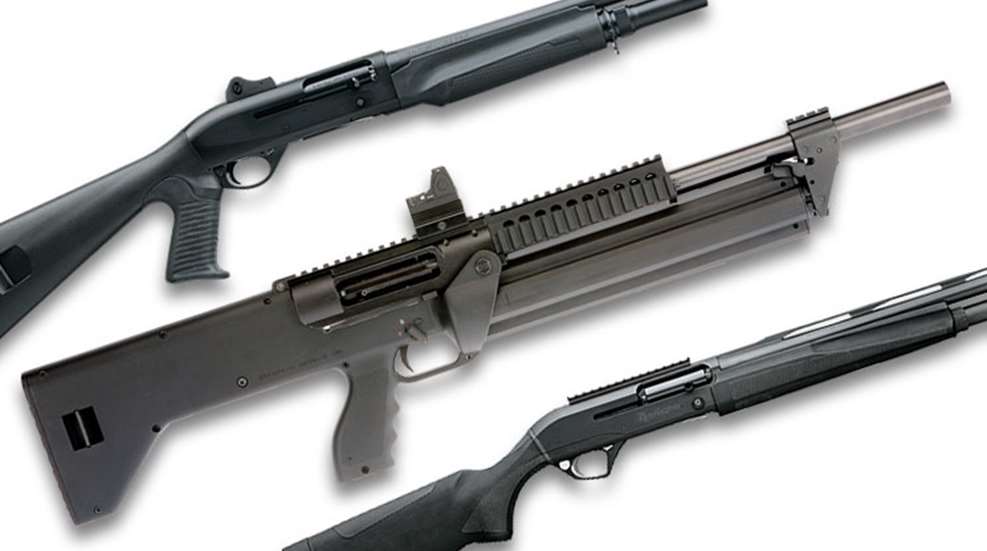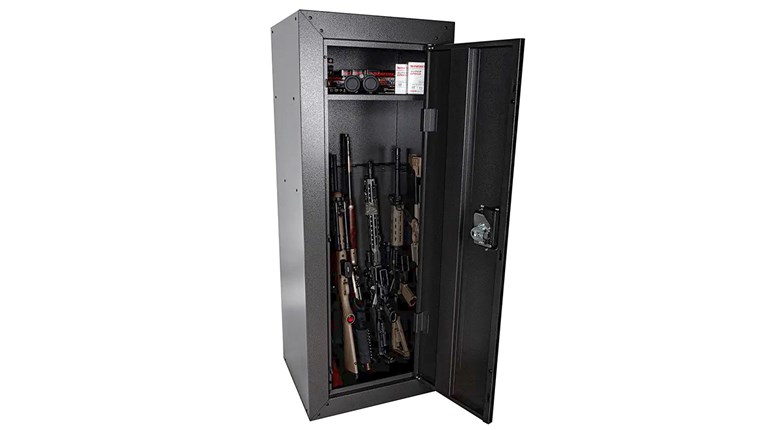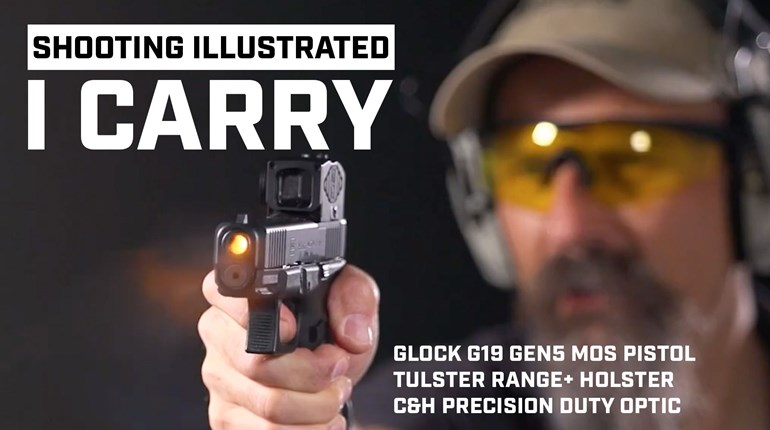
Everything equal, pumps are more reliable than semi-automatics. But if it’s clean and the ammo is of adequate power, I believe a quality semi is as reliable. And if a person is not an expert with either gun, I believe the semi is more reliable because a pump is easy to short stroke under duress. What’s more, unlike a hunter or soldier, a home defender has the luxury of keeping the semi-auto sparkling clean and well- oiled. And finally, when fired with any fodder except 1-ounce target loads—certainly 00-buck or high-brass loads—a modern semi-auto rarely malfunctions.
Here are a few semi-automatic actions in viable tactical shotguns, and the pros and cons of each.
Gas-Operated
Most gas-operated shotguns work by the same principal: Small ports bleed gas from the fired shell and direct it to strike a piston that in turn forces the action bars back, unlocking the bolt and driving it rearward to eject the shell. A heavy spring returns the bolt back into battery with a fresh shell released from the tube magazine. Many, including the most popular semi-auto of all time, the Remington 1100, utilize a flat-faced bolt locked in place by a retracting lug in its top that mates with a recess in the barrel extension. Other designs use rotating bolt heads that lock into the barrel extension. Without going too American Rifleman on you, all of the following actions work great when clean, lubed and adequately powered. The gas-operated action’s advantage is that it’s the most effective at mitigating recoil. Its downside is that it blows grime back into the receiver, dirtying it and increasing the likelihood of malfunction. Examples of gas-operated tactical shotguns:
Remington 1100 Tac 4: It’s an eight-round version of a proven hunting gun. Keep it slick and it will run.
FN SLP Mark 1: FN owns Winchester firearms and uses its excellent X2 action that’s likely the world’s fastest. This shotgun comes with two pistons to be interchanged by the shooter for light and heavy loads. This $1,000 shotgun exhibits excellent recoil mitigation.
Mossberg 930 Tactical: This standard gas action is good enough for Jerry Miculek in competition and is one of the least-expensive semi-autos at $499.
Beretta 1301 Tactical: This shotgun uses Beretta’s “BLINK” self-regulating gas system that features a return spring in front of the receiver. It’s has a good reputation for cycling lighter loads and is incredibly fast.
Benelli M4: Perhaps the gold standard for combat shotguns, this $2,000 model runs on Benelli’s ARGO (Auto Regulating Gas Operated) system that features dual pistons welded directly under the barrel.
Benelli M3 Tactical: It features Benelli’s proven ARGO action, but it also can be operated in pump-action mode when the situation calls for light loads.
Weatherby SA-459 8-Shot: This Turkish-made action is fairly standard and is also available in 20-gauge.
CZ 712: Another Turkish-made gun, and another reliable gas action at an affordable price.

Remington Versa Max Tactical: This 1100-like shotgun features the simple Versa Port system that self-regulates the amount of gas needed to cycle the load by placing seven gas ports directly in the chamber where the shell itself seals off those it doesn’t need, depending on its length. Remington copied Benelli’s ARGO dual pistol design as well as its two-lug rotating bolt head, and the magazine cutoff button allows the shooter to unload and load the chamber without unloading the magazine. It’s very reliable and is one of the lightest-recoiling 12-gauge shotguns on the market.
Saiga-12: This AK-47-style shotgun is quick to reload, thanks to its detachable-box magazine. It’s not the most reliable shotgun, and with its angular stock and large magazine it’s neither the most recoil-friendly nor the most compact.
Recoil Action
While long-recoil actions such as the original semi-automatic shotgun—the Browning Auto-5—have been replaced by better designs, a few tactical shotguns utilize short-recoil actions.

SRM 1216: This unique shotgun uses a rotating, four-tube magazine that feeds its roller-delayed-blowback action. It’s compact and holds 16 rounds, but initial tests indicate it’s less than stellar in reliability. Its non-gas system does little for recoil reduction.
Inertia Action
Benelli is best known for its inertia-operated actions, wherein a heavy bolt uses the principal of inertia to stay in place as the gun recoils around it. As it does, a spring in the bolt compresses, and when it rebounds it unlocks the rotating bolt head from the barrel extension. The bolt then flings backward, ejecting the shell. It’s reliable for two reasons. First, its few parts are robust, and second, all the grime from the shell goes out the barrel, so it stays relatively clean. That said, it doesn’t have the level of recoil mitigation offered by gas-operated actions. Examples include:

Benelli M2 Tactical: This excellent shotgun holds seven-plus-one shells and features Benelli’s legendary reliability. It also comes in 20-gauge.
Benelli Vinci Tactical: The Vinci features the same action as the M2, but its modular system breaks down for perhaps easier cleaning. The Vinci has never been particularly comfortable in my hands, however, and while it claims to be the fastest-cycling shotgun, I haven’t seen it.
Johnston’s Favorites:
I don’t prefer pistol grips or ghost-ring sights on my home-defense shotguns. Ghost rings provide accuracy for slugs at longer ranges, but can snag and rob your field-of-view in a house. I also don’t like recoil. I like a shotgun that’s reliable, has a full-length stock, a rail for a light, eight-plus round capacity and shoots where I look. I like the Remington Versa Max Tactical if money isn’t an issue. If it is, the 930 from Mossberg is a great buy. The FN is somewhere in the middle. If you prefer pistol grips and ghost rings, Benelli’s M4 can’t be beaten. The Weatherby SA 459 gives excellent value, too.
Whatever semi-auto you choose, keep it clean and well oiled. Oil is critical but often overlooked. A break-in period of several hundred rounds is also necessary. And, if you don’t prefer buckshot that can penetrate multiple walls, consider using magnum No. 4 or 6 game loads rather than birdshot in order to provide enough power to cycle the action reliably. While they may go through one, they won’t penetrate multiple walls.




































